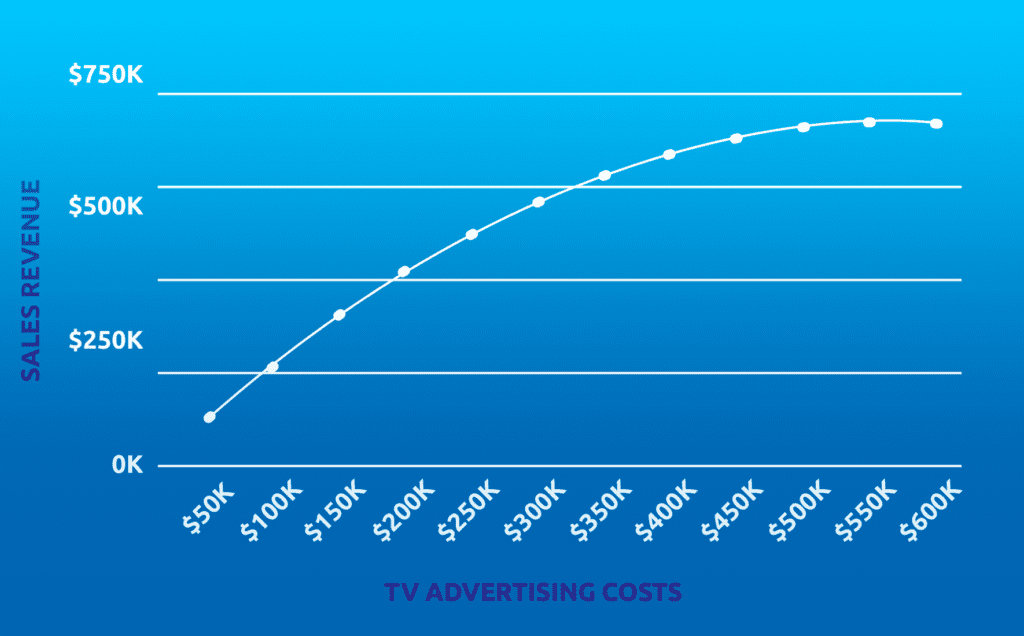John Wanamaker, a retail pioneer, once said, “Half the money I spend on advertising is wasted; the trouble is I don’t know which half.” Over a hundred years have passed, but this age-old quote is still relevant today. How do you know which marketing activities are driving sales? Marketing Mix Modeling (MMM) can answer that question. It looks at how marketing efforts influenced business results in the past, so you can make better decisions when spending marketing budgets in the future.
Table of Contents
What Is Marketing Mix Modeling?
Let’s get the jargon bit out of the way before we break it down. Marketing Or Media mix modeling is a statistical analysis that uses internal and external factors to determine what impacted sales performance over a set period. So, there are many different ways to generate sales. For example, you can use social media ads, SEO, billboards, influencer marketing, promotions, email, etc. All of these marketing tactics can be useful. But how much does each channel actually contribute to business performance? MMM helps you see how all the pieces fit together to generate sales.
Marketing Mix Modelling Explained in Football Terms
A good way to explain MMM is to use a sports analogy. Don’t worry if you hate sports. This will only take a minute, and I promise you’ll see why it’s relevant to MMM. Let’s say you’re the manager of a football team. Your job is to pick the best 11 players to win a game. You win by scoring more goals than the opposing team. To pick the team most likely to win, you could look at the last game you played and analyze each player’s contribution. Factors like how much distance each player ran, how many goals they scored, etc.
This might reveal some interesting insights, but it only tells part of the story. Football is a complex game. Sometimes the player that scores the most goals isn’t the biggest contributor to the win. You also need to stop the other team from scoring. Playmakers, defenders, and goalkeepers often make vital contributions. So, what does this have to do with MMM?
Some marketing channels make a significant contribution to sales. But that contribution doesn’t always show up in your attribution data. For example, email marketing could generate the most conversions for your business. So you might assume it’s your most important marketing channel. But your content marketing campaigns could be responsible for warming up leads until they are ready to convert. It would be a mistake to double your email marketing budget and cut your content resources in half. You can better understand your marketing mix by assessing performance data over multiple years. It provides a clearer picture of how each marketing tactic impacts sales. These insights can help you optimize your marketing spend.
How Does Marketing Mix Modeling Work?
Marketing Or Media mix models work by analyzing lots of data to identify patterns. It looks at everything that could impact marketing performance. This includes factors like baseline sales due to brand equity, seasonality, marketing budget allocation, product pricing, and more. A model is created using the principle of Multi-Linear Regression. It evaluates the impact of multiple variables, like the factors we just mentioned, on a single dependent variable – sales.
The goal is to reveal the relationship between the independent variables and the dependent variable. Some of these variables are weighted to provide a more accurate analysis. Many variables have a linear impact on sales. If you increase the input or budget, sales will increase at the same rate.
Here’s an example of what a linear impact on sales looks like:

But others do not have a linear impact. Instead, once they reach a certain point, every additional dollar spent will have a diminishing return. TV advertising is an excellent example of this type of variable. Your ads can create brand awareness and increase sales, but that impact reduces over time. Once you reach a saturation point, your ads don’t have the same impact on your audience. This is because people are already aware of your brand.
Here’s an example of what that looks like plotted on a graph:

The incremental sales generated by TV ads diminish and become constant at a certain point. Marketing mix models combine all this data with sales figures over a long period, usually 2-3 years. Once a marketing mix model is ready, it can help you answer “what-if” questions and scenarios. You can predict what will happen to sales if you reallocate your marketing budget. This can help you work out the optimal marketing mix for ROI.
A Marketing Or Media Mix Modeling Example (In-Depth)
That’s the technical bit covered, so what does MMM look like in action? Let’s keep things simple by going back in time to the 1970s. Newspapers are in black and white, and there are only a few TV channels. The internet is a decade away from being invented. There are fewer marketing channels, making it easier to get to grips with MMM. You’re the CMO of a major CPG brand in the US, tasked with overseeing TV ads, direct mail, radio, and print advertising.
You want to find the best way to allocate your budget, so you create a marketing mix model. Your model includes all sales data by region, marketing channel spend, and all the other variables you collected data on over the past three years. All these variables are analyzed at different time intervals and compared to the corresponding sales performance. The output of your model is a decomposition of sales. It shows the baseline sales not influenced by marketing and the incremental sales resulting from your marketing tactics.

Next, you break down the data for each marketing channel. The analysis reveals that sales rose when TV advertising spending increased during the first quarter in each of the last three years. But if you dig into the data, you can see that most sales came from the warmer southern states. Increasing TV ad budgets didn’t lift revenue much above baseline sales in the colder, northern states. By adjusting your budget to account for that seasonality, location, and channel, your ROI is expected to improve.
The model demonstrates the relationship between marketing tactics and sales. With these insights, marketing managers can accurately predict what will happen to sales when they make changes to the marketing mix. Fast-forward to the present day, and the marketing landscape has fragmented. There are so many ways to reach consumers. In this splintered dynamic, MMM is an important tool. It helps you see the big picture and get the best ROI from your marketing strategy.





